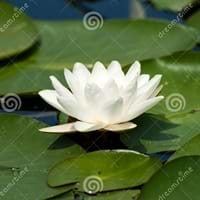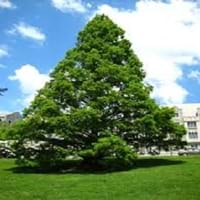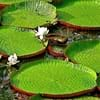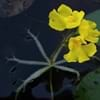Life Span
Perennial
Perennial
Type
Aquatics
Needled or Scaled Evergreen
Origin
Europe, Russia/Siberia, Northern Africa, Asia
China
Types
Not Available
Not available
Habitat
Ponds
Deciduous forests, Mixed deciduous forest
USDA Hardiness Zone
5-9
5-9
Sunset Zone
21,22
A3, 3a, 3b, 4, 5, 6, 7, 8, 9, 10, 14, 15, 16, 17, 18, 19, 20, 21, 22, 23, 24
Habit
Not Available
Pyramidal
Minimum Height
Not Available
Minimum Width
Not Available
Flower Color
White, Yellow, Ivory
Green, Light Green
Flower Color Modifier
Bicolor
Bicolor
Leaf Color in Spring
Green, Dark Green
Light Green
Leaf Color in Summer
Green, Dark Green
Green, Light Green
Leaf Color in Fall
Green, Dark Green
Orange, Bronze
Leaf Color in Winter
Not Available
Not Available
Leaf Shape
Circular
Alternate
Plant Season
Spring, Summer
Spring, Summer, Fall, Winter
Sunlight
Full Sun, Partial Sun
Full Sun
Type of Soil
Loam, Sand
Clay, Loam
The pH of Soil
Neutral
Acidic, Neutral
Soil Drainage
Poorly Drained
Average
Bloom Time
Late Spring, Early Summer, Summer, Late Summer
Indeterminate
Tolerances
Wet Site
Drought
Where to Plant?
In Water
Ground
How to Plant?
Seedlings
Seedlings
Plant Maintenance
Medium
Medium
Watering Requirements
Plant grows in water
Needs small amount of water
In Summer
Lots of watering
Lots of watering
In Spring
Moderate
Moderate
In Winter
Average Water
Average Water
Soil pH
Neutral
Acidic, Neutral
Soil Type
Loam, Sand
Clay, Loam
Soil Drainage Capacity
Poorly Drained
Average
Sun Exposure
Full Sun, Partial Sun
Full Sun
Pruning
Remove damaged leaves, Remove dead branches, Remove dead leaves
Prune if you want to improve plant shape, Remove damaged leaves, Remove dead branches, Remove dead leaves
Fertilizers
All-Purpose Liquid Fertilizer
All-Purpose Liquid Fertilizer, Compost
Pests and Diseases
Red blotch
Dry root rot, Free of serious pests and diseases, fungus
Plant Tolerance
Drought
Deer resistant, Drought
Flowers
Showy
Insignificant
Flower Petal Number
Single
Single
Foliage Texture
Coarse
Fine
Foliage Sheen
Glossy
Glossy
Attracts
Flies
Birds, Squirrels
Aesthetic Uses
Showy Purposes
along a porch, deck or patio, Beautification, Landscape Designing, Showy Purposes, Wild gardens
Beauty Benefits
Not Available
Not Available
Environmental Uses
Air purification
Air purification
Medicinal Uses
Anaphrodisiac, Anodyne, Antiscrophulatic, Astringent
Unknown
Part of Plant Used
Root, Seeds
Not Available
Other Uses
Not Available
deer resistant, Shelterbelt, Showy Purposes
Used As Indoor Plant
No
No
Used As Outdoor Plant
Yes
Yes
Garden Design
Water Gardens
Feature Plant, Shade Trees, Street Trees
Botanical Name
NYMPHAEA alba
METASEQUOIA glyptostroboides
Common Name
European White Waterlily, Nenuphar, White Lotus
dawn redwood
In Hindi
Nymphaea alba
dawn redwood
In German
Weiße Seerose
Urweltmammutbaum
In French
Nénuphar blanc
aube séquoia
In Spanish
Nymphaea alba
metasecuoya
In Greek
Nymphaea alba
dawn redwood
In Portuguese
Nymphaea alba
amanhecer Redwood
In Polish
Grzybienie białe
świt sekwoja
In Latin
Nymphaea alba
dawn redwood
Phylum
Vascular plant
Pinophyta
Class
Magnoliopsida
Pinopsida
Order
Nymphaeales
Pinales
Family
Nymphaeaceae
Cupressaceae
Genus
Nymphaea
Metasequoia
Clade
Angiosperms
Not Available
Tribe
Not Available
Not Available
Subfamily
Cassidinae
Sequoioideae
Number of Species
Not Available
Not Available
Difference Between Nymphaea Alba and Dawn Redwood
If you are confused whether Nymphaea Alba or Dawn Redwood are same, here are some features about those plants to help you choose better. Many people think that these two plants have the same characteristics, but one can see Nymphaea Alba and Dawn Redwood Information and learn more about it. Fertilizers required for proper growth of Nymphaea Alba are All-Purpose Liquid Fertilizer, whereas for Dawn Redwood fertilizers required are All-Purpose Liquid Fertilizer and Compost. Hence, one should know the basic difference between Nymphaea Alba and Dawn Redwood if you are planning to have them in your garden to enhance its beauty.
<
Flowering PlantsImportance of Nymphaea Alba and Dawn Redwood
Want to have the most appropriate plant for your garden? You might want to know the importance of Nymphaea Alba and Dawn Redwood. Basically, these two plants vary in many aspects. Compare Nymphaea Alba and Dawn Redwood as they differ in many characteristics such as their life, care, benefits, facts, etc. Every gardener must at least have the slightest clue about the plants he wants to plant in his garden. Compare their benefits, which differ in many ways like facts and uses. The medicinal use of Nymphaea Alba is Anaphrodisiac, Anodyne, Antiscrophulatic and Astringent whereas of Dawn Redwood is Unknown. Nymphaea Alba has beauty benefits as follows: Not Available while Dawn Redwood has beauty benefits as follows: Not Available.
Compare Facts of Nymphaea Alba vs Dawn Redwood
How to choose the best garden plant for your garden depending upon its facts? Here garden plant comparison will help you to solve this query. Compare the facts of Nymphaea Alba vs Dawn Redwood and know which one to choose. As garden plants have benefits and other uses, allergy is also a major drawback of plants for some people. Allergic reactions of Nymphaea Alba are Headache whereas of Dawn Redwood have Pollen respectively. Having a fruit bearing plant in your garden can be a plus point of your garden. Nymphaea Alba has no showy fruits and Dawn Redwood has showy fruits. Also Nymphaea Alba is not flowering and Dawn Redwood is not flowering . You can compare Nymphaea Alba and Dawn Redwood facts and facts of other plants too.





